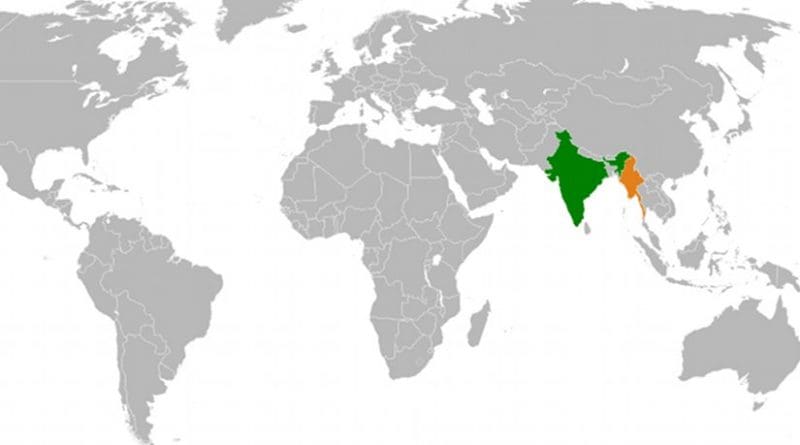India-Myanmar: Time To Rev Up Bilateral Ties – OpEd
By IPCS
By Ashok Sajjanhar*
The National League for Democracy (NLD) led by Aung San Suu Kyi assumed power in Myanmar in March, 2016. The NLD had handsomely won the elections in November 2015, notwithstanding the huge obstacles placed in its path by the military. Suu Kyi herself could not assume the role of the country’s president because of a constitutional provision debarring her from doing so. She hence anointed her loyal aide and confidant U Htin Kyaw to this high position.
India’s first official contact with the NLD government was established when External Affairs Minister Sushma Swaraj paid a one-day visit to Naypyidaw on 22nd August 2016 where she met Suu Kyi as well as President Kyaw. Conversely, Chinese Foreign Minister Wang Yi had travelled to Naypyidaw on 05 April 2016 – within a week of assumption of power by the NLD – to establish contact with the new government.
President Kyaw chose India as the destination of his first foreign visit as president. This visit took place from 27-30 August 2016. This underscores the importance Myanmar attaches to relations with India. At the same time it should be noted that Suu Kyi, whose official position is State Counsellor and Foreign Minister but who is the de facto leader of the country, chose China to be the first country of her visit – notwithstanding China’s collaboration with the military government when she was under house arrest. When she was under house arrest, Suu Kyi was highly critical of Chinese actions. After assuming power, virtues of realpolitik appear to have caught up with her and she seems to have realised the need to mend fences with Beijing.
Domestic peace and security, as well as economic development appear to be the basic determinants of Suu Kyi’s reach out to China. She is now scheduled to visit India in October for the BRICS-BIMSTEC Summit outreach during which she will meet Indian Prime Minister Narendra Modi and other world leaders.
Despite the delay in reaching out to Myanmar, India can quickly make up for lost time by working assiduously and with dedication to strengthen the partnership. Both countries share a heritage of religious, linguistic, cultural and ethnic ties.
President Kyaw’s tour provided a valuable opportunity to both countries to have a comprehensive dialogue on all issues of mutual interest and concern.
The most important message conveyed to President Kyaw was by Prime Minister Modi, who in his statement said, ‘’at every step of the way, 1.25 billion people of India will stand by you – both as partners and as friends.’’ This message was both in context of bilateral ties as well as in the regional context of providing counterpoise to China’s increasing influence in Myanmar’s affairs, which often makes Myanmarese citizens and leaders wary and nervous.
During the wide-ranging talks between the two leaders, particular focus was accorded to security along the 1640-kilometer long land border shared by the countries. Insurgents from Indian states often seek refuge in Myanmar’s jungles to launch strikes against Indian civilians and security forces. With Myanmar’s cooperation, India is effectively dealing with this menace. No less than President Kyaw reassured Swaraj of Naypyidaw’s support to New Delhi in ensuring security during her visit and stated that Myanmar will not allow its territory to be used for attacks against India. This commitment was reiterated during President Kyaw’s visit to New Delhi as well.
Myanmar is the spring board for providing connectivity to India’s northeastern states with the ASEAN countries. It therefore plays a critical role not only in ensuring stability and security of northeast India but also in its economic development and progress.
Two of the four agreements signed during the visit – the India-Myanmar-Thailand trilateral highway and the upgradation of the road segment between Kalewa and Yagyi; and the completion of the Kaladan Multimodal Transit Transport Project by December 2016 – relate to improving connectivity. Both countries expressed their resolve to strengthen maritime security cooperation in the Bay of Bengal. Myanmar represents the pivot around which the success of India’s ‘Act East Policy’ – launched by Modi in Naypyidaw in November 2014 – revolves. It was decided to strengthen engagement in economic and commercial cooperation including agriculture, banking, power and energy, and trade in pulses. Both countries agreed to expand cooperation in oil exploration and hydrocarbon pipeline construction by Indian companies.
India offered to share its experience in creating institutions as well as policies to deal with relations between the Centre, states and regions as well as ethnic and religious minorities. India expressed support for Myanmar’s national reconciliation and peace process under the Panglong Conference. It was decided to give further impetus to development cooperation including capacity building, education, healthcare and infrastructure. Promoting cultural cooperation and academic exchanges was accorded significant emphasis.
Enhancing ties with India can help Myanmar to counterbalance China’s influence and also develop its economy by using Indian investment, expertise and capacity. Transition to a civilian government in Myanmar has given greater strategic space to India. The message President Kyaw takes back from New Delhi is that India stands ready to support Myanmar in every possible way on its march to security, reconciliation and prosperity. As Prime Minister Modi said, “A bright future for Myanmar is not just your objective. It is also our aspiration.”
* Ashok Sajjanhar
Former Indian Ambassador to Kazakhstan, Sweden and Latvia

